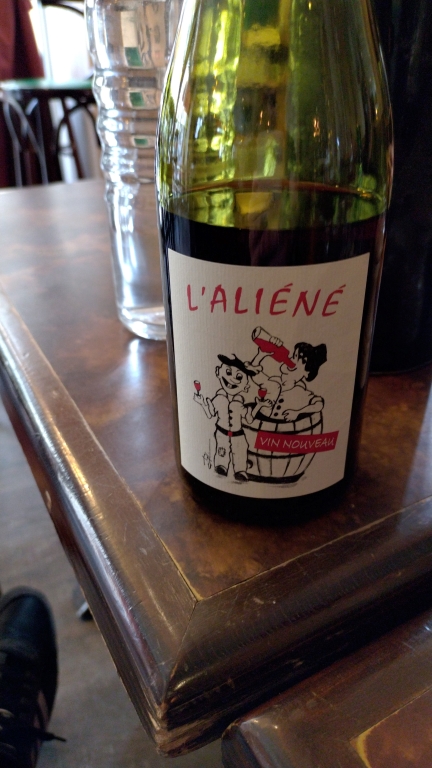The Coteaux du Lyonnais AOC appellation
15 km away from the city of Lyons, between the Beaujolais and Côtes du Rhone appellations, you can find a small appellation called Coteaux du Lyonnais. With only 207 hectares, this AOC produces red wine and a few white and rosé and it is divided into a north part and a south part.

Red wine is produced only with Gamay, white wines use Chardonnay, Aligoté, and rarely Pinot Blanc. The region is known for its wine production since the Gallo-Roman age. There are some mentions of vineyards in 45 BC.
During the middle age, every parish around Lyon with a hillside has at least one vineyard. The place of vines in agricultural exploitation close to the city of Lyon was around 50%. The area of wine production was larger than today. The grape varieties used were dominated by Gamay, but also Viognier, Seurine Noire, and Pinot.
Winegrowing methods seem to have been elaborate, with the addition of manure, and protection of roots during the winter, for example. But high yields that were documented for some areas (about 110 HL per hectare, against 60 today) and the fact no document talks about the quality of the wine suggest that the wine was only used for every day consumption.
Until the phylloxera crisis around 1880, the region was the main producer for Lyons and its region. The wine is so rooted in the popular culture in Lyon that when a cabaret changed the traditional jar of wine from 1 l to 46 cl (for the same price), people start a revolt (Canuts revolt).
After the phylloxera, the vineyard’s ancient vines varieties were replaced by the Gamay, and the size of vineyard was reduced. In 1956, 6 cantons of the vineyard formed the first appellation (VDQS) and in 1984 the region get its AOC, Coteaux du Lyonnais. Since the quality raise, winemakers started to experiment and converted vineyards to organic or biodynamic farming, and the winemaking process improved. The wine gains more popularity outside Lyons, mostly by exploiting the difference between terroirs in the appellation.
The soil is mainly made of granite and silt. But the region is more a mosaic of terroirs. In the north, the soil is made of metamorphic rock, in the south soil is mostly composed of sand, while in other parts is composed of clay-limestone and clay-siliceous. In the northern part of the Rhône’s Valley, you can expect to find silts or even ancient volcanic rocks.
This mosaic of terroir is accompanied by several different climates. The whole region comes under the influence of 3 major climates, Mediterranean, Oceanic, and Continental. Summers are warm, but in winter, with the influence of the Alpes, the temperature colder.
Altitude is another factor, temperature differences between plateaus and hillsides can be huge, and vine growing at an altitude of 500 m or more is difficult.
Climates, soils, and winemaker practices, allow us to taste wine that has a real identity. You may think that a red from Coteaux du Lyonnais has a similar flavor that its counterpart in the Beaujolais. You will be wrong. Even if the grape, Gamay, is the same, the taste is different.
The red has often red fruit flavors when young and more ripe black fruit after a few years, sometimes a little touch of spice is present. Tannins are gentle, the wine very digestive. The wine can sometimes present a touch of minerality.
Red wines can age up to 5 years.
White wines are mainly made using Chardonnays and sometime Aligoté. The nose is very aromatic with floral, orange, and minerality. The mouth is complex and very fresh. White wines can be aged up to 3 years too.
Some examples, are Le champ du Loup, Ultreïa, and Le Coeur des Hommes From Emmanuel Rostaing Tayard, or Le clos, Traboules and L’Hecto from Domaine Clusel-Roch Two perfect illustrations of the singularity of the wine from Coteaux de Lyon.